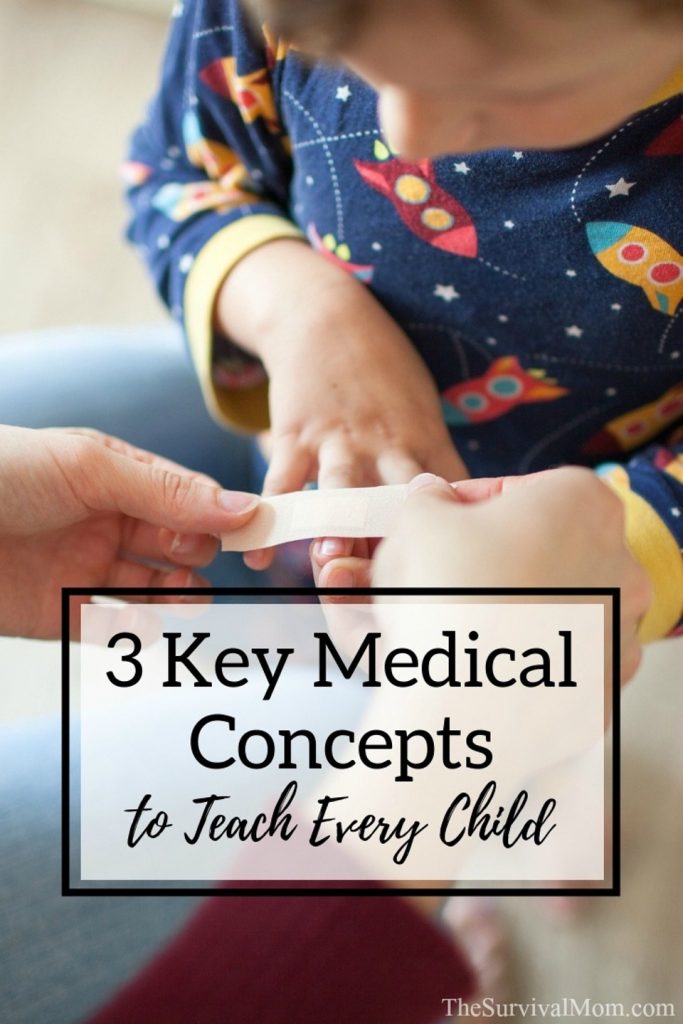Kids instinctively understand that the well-being of their bodies is important. Visits to the pediatrician are one of their earliest memories. With a natural interest already in place, it makes sense to include them in family health training. After all, the more people in the family who know what to do in an emergency, the better. Following after 3 key medical concepts to teach every child.

As a new mom, I came running every time one of the kids yelled, “It’s an emergency!” It didn’t take long, though, for me to wise up. A four-year-old has a lot to learn about the definition of an emergency! According to Patrice Blank, a medical professional and owner of 123CPR, a medical training company based in Phoenix, the definition of an emergency is the most important concept for children to learn.
“Kids must learn how to recognize when they need to get help. Very young children, say ages three and four, usually have adults present with them, and they need to know when an adult might need help,” she says. It’s also a vital concept for older kids who are more capable of not only recognizing the danger signs but then following through with a 911 call and even administering basic first aid themselves.
Each of these is a signal of a possible medical crisis, but just knowing them isn’t enough. Parents should teach their kids what each signal means and provide simple, real-life examples and hands-on practice.
When he was young, my son would use half a dozen bandages because he was “bleeding” from scraping a knee on the sidewalk. To him, any blood is, “a lot”. Just about every kid has experienced a scraped elbow or knee, so this is an ideal example to use for teaching Signal 1, Is there a lot of blood?
Remind your child of those sidewalk scrapes and ask, “Were you bleeding? Did we need to call 911?” Chances are, they’ll recognize that the scraped knee, however painful, didn’t require medical attention.
On the other hand, do they know what, “a lot” of blood is? Patrice uses a balloon partially filled with water to illustrate this point. She pokes a tiny hole in the balloon and a few drops emerge. “This isn’t a lot of blood,” she tells them. However, once she pokes a larger hole and kids immediately see a steady stream of water, they get it. “Now this,” she explains, “is a lot of blood. If you see an injury like this, it’s time to call 911.”
The Women's Outdoor News, aka The WON, features news, reviews and stories about women who are shooting, hunting, fishing and actively engaging in outdoor adventure. This publication is for women, by women. View all posts by The WON